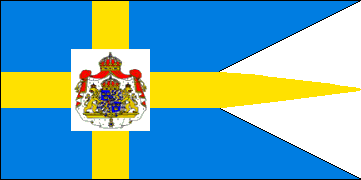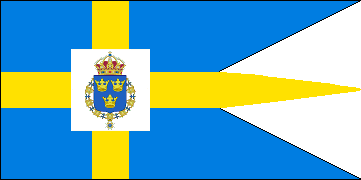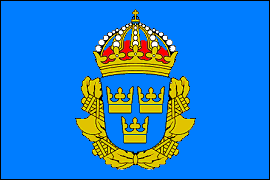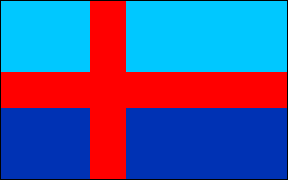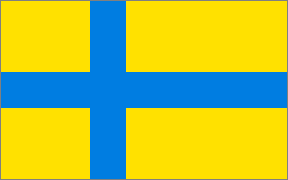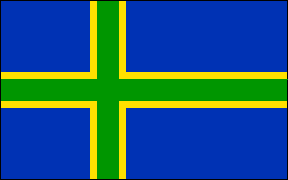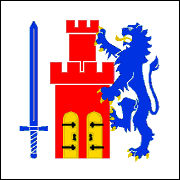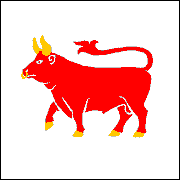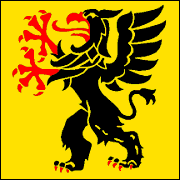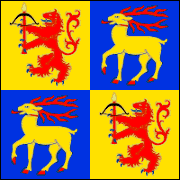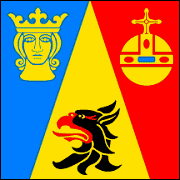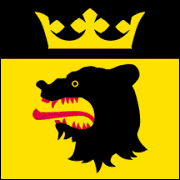|
FLAGS OF OLD SWEDEN |
|
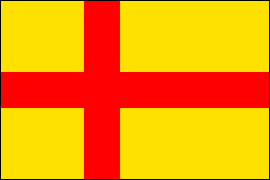
Banner of the Kalmar Union
• Fifteenth-Sixteenth Centuries |

Swedish Flag
circa 1520 |
|
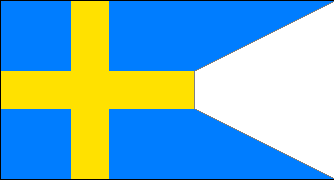
Swedish Royal Flag &
Ensign • Sixteenth Century-1818 |
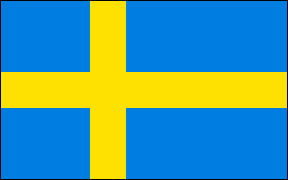
Swedish Merchant
Ensign •
Sixteenth Century-1818 |
|
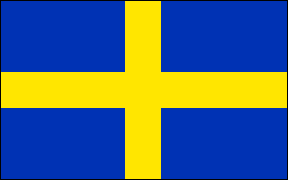
Swedish Merchant Ensign
circa 1815 |
The flag of the Kalmar Union, "the
Banner of the Realms" is described in letters of King
Eric of Pomerania, circa
1430, as a red cross on a yellow field. At that
time Sweden used a blue flag with a white cross; subsequent to
independence the shade of blue became lighter and the cross became
yellow. These colors were probably adopted to conform with the
ancient Swedish arms: three golden crowns on a blue shield,
which date from the thirteenth century. The forked flag denoted
royal authority and was used for official purposes; the rectangular
flag was used as an ensign by merchant vessels. An early
nineteenth-century source depicts the ensign with a dark blue field
and the cross centered rather than offset in the Scandinavian style.
Such ensigns probably did exist, since in those days precise
regulations concerning flag construction and colors were sketchy.
|
|
FLAGS OF THE PERSONAL
UNION OF SWEDEN & NORWAY |
|
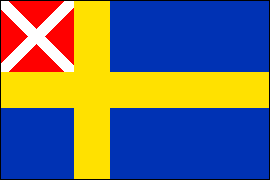
Civil
Ensign • 1818-44
|
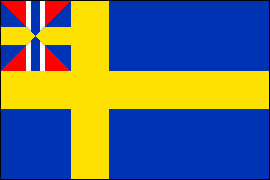
Civil
Ensign • 1844-1905 |
|
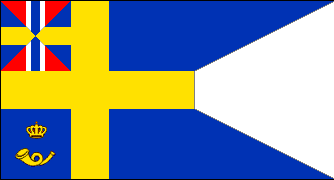
Postal Service
Ensign • 1844-1905 |
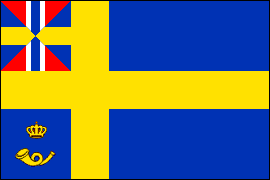
Postal Ensign for Merchant
Vessels • 1844-1905 |
|
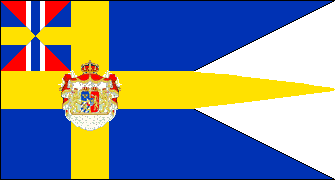
Royal Flag for Sweden • 1844-1905 |
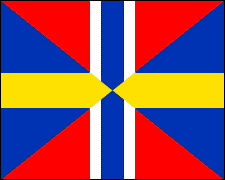
Diplomatic & Consular Flag of
Sweden-Norway •
1844-1905 |
At the
beginning of the personal union with Norway, a so-called Union Flag
for both countries was adopted: the
blue and yellow Swedish flag with a red canton bearing a white saltire
cross for Norway. On land there were no
Swedish or Norwegian flags for general use, only official and royal
flags.
In 1844 the
Union Flag was abolished and separate flags were prescribed for
Sweden and Norway. Sweden kept its blue/yellow flag and Norway
adopted a variant of its 1821-44 ensign. In the canton of both flags
appeared the "Union Mark": the Swedish and Norwegian crosses
conjoined. (This symbol came to be nicknamed the "herring salad" for its resemblance to a Scandinavian delicacy.)
A tongued Swedish ensign was used by state
authorities, usually with a department badge added. These ensigns
had two rather than three tongues, probably to distinguish them from
the war ensign. An example was
the postal ensign for Sweden. This
ensign was used by vessels belonging to postal service; merchant
vessels contracted to carry the mail could fly the rectangular civil
ensign with the badge added. The royal flag for Sweden was
the three-tongued war ensign (1818 and 1844 versions) with the greater royal arms at the
intersection of the cross. The Union Mark itself was used by the
diplomatic service, which was maintained jointly by Sweden and
Norway.
|
|
FLAGS OF THE
KINGDOM OF SWEDEN SINCE 1905 |
|

National Flag &
State/Civil Ensign Since 1905 |










